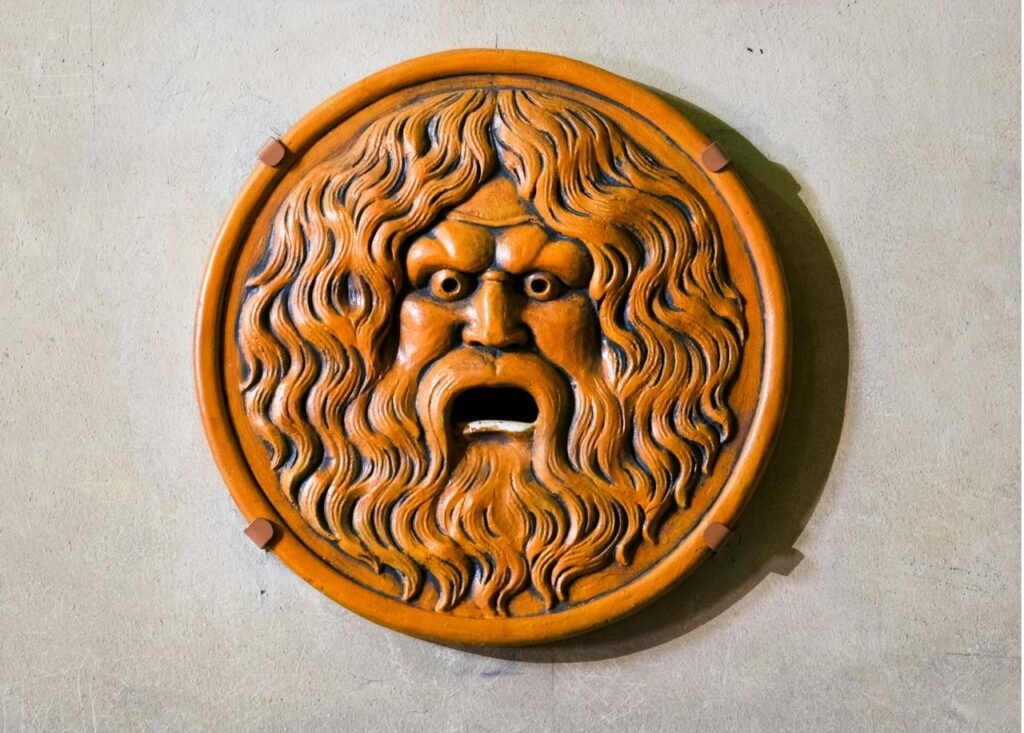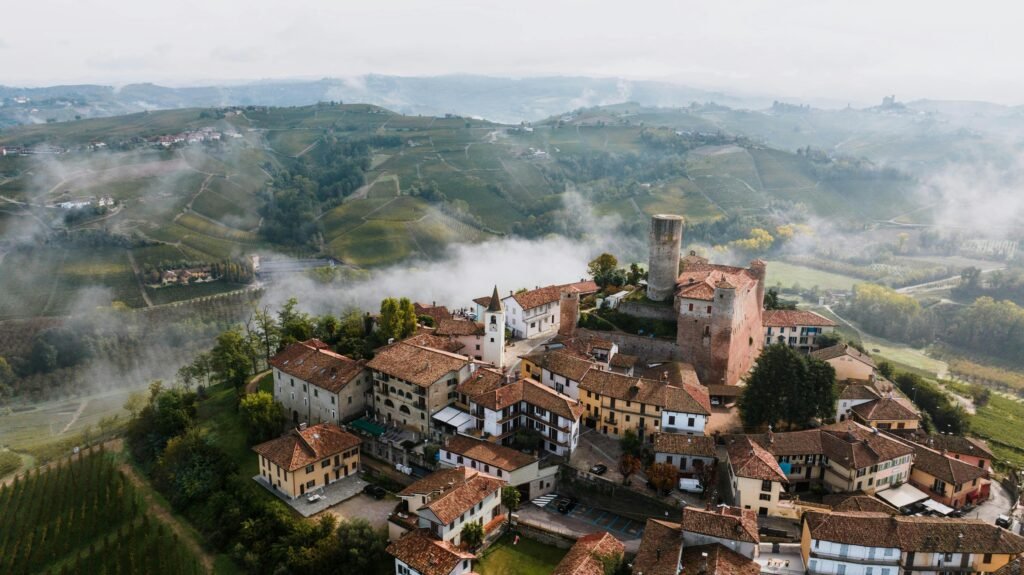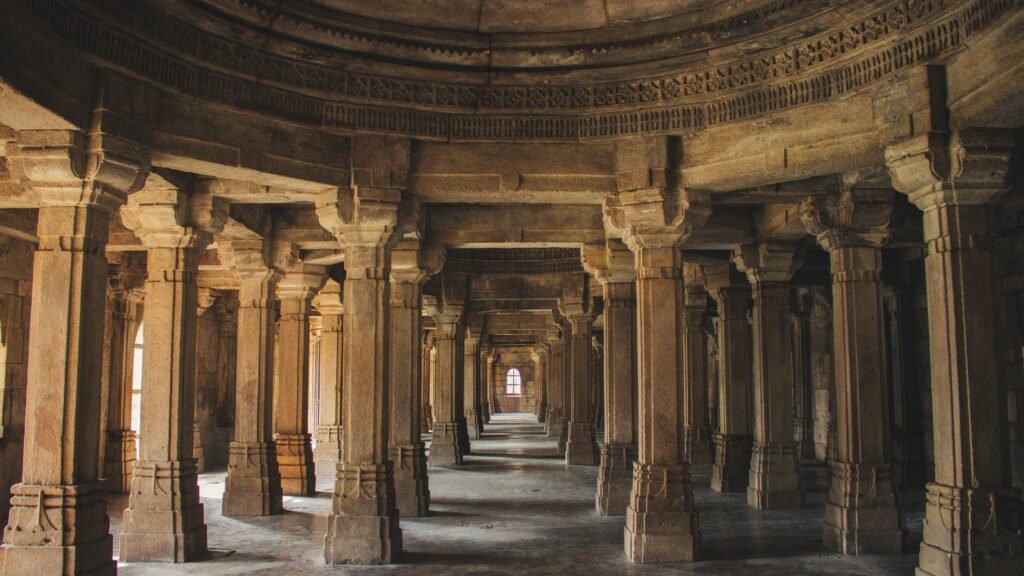I’ll never forget stumbling upon the Mouth of Truth during a sweltering Roman summer. Tucked beneath the portico of the Church of Santa Maria in Cosmedin, this massive marble mask drew a line of eager visitors, each waiting to test the legend with a nervous smile.
Known in Italian as Bocca della Verità, the Mouth of Truth Rome is a 1,300-pound circular disc, nearly six feet wide, featuring the face of a bearded man with hollow eyes and an open mouth.
While it may look like an ancient piece of public art, its fame stems from a gripping medieval legend: if you tell a lie while placing your hand in the mouth, it will be bitten off.
Thanks to its eerie myth and a cameo in the 1953 film Roman Holiday, the Mouth of Truth has become one of Rome’s most iconic (and interactive) attractions. But its story goes much deeper than cinema and superstition.
The Origins of the Mouth of Truth: Where Did It Come From?
I’ve spent countless hours researching ancient Roman artifacts, and the Mouth of Truth remains one of the most enigmatic! Dating back to the first century AD, this massive marble disc has puzzled historians and archaeologists for generations.
Despite all our modern technology and research methods, we still don’t have definitive answers about its original purpose.The most widely accepted theory suggests it was originally a decorative manhole cover for Rome’s ancient sewer system, specifically designed for a temple dedicated to Hercules.
Other scholars believe it may have been an ornate fountain face or a ceremonial well cover. Some theories connect it to the Temple of Mercury, which once stood near its current location. Mercury was the god of, among other things, financial gain and commerce – perhaps explaining why the face resembles the river god Oceanus, who was often associated with wealth and abundance.
According to some locals the mask might have been part of an ancient oracle site. In ancient Rome, people would visit oracles to get answers about their future or to seek guidance.
The hollow eyes and open mouth would have created quite an impressive visual effect if priests spoke through it during ceremonies! While there’s no definitive proof of this theory, it does make you wonder about the theatrical aspects of ancient Roman religion.
The Basilica of Santa Maria in Cosmedin: What’s the Story Behind the Location?
The Church of Santa Maria in Cosmedin has a fascinating history dating back to the 6th century. Originally, it was a food distribution center for the Byzantine community in Rome – “Cosmedin” actually refers to the Greek word “kosmidion,” meaning “ornate.”
The church was built on the ruins of an ancient Roman temple dedicated to Hercules and the ancient Roman grain exchange (Statio Annonae). Talk about layers of history in one location!
The church underwent significant renovations in the 8th and 12th centuries, giving us the beautiful medieval structure we see today.
Its bell tower, built in the 12th century, remains one of the tallest and most beautiful in Rome. Inside, you’ll find gorgeous Byzantine-style frescoes, a medieval pavement, and an exquisite marble choir enclosure.
What’s particularly interesting is how the Mouth of Truth and the church formed a symbiotic relationship over time. While many visitors come primarily to see the famous stone face, many end up exploring the beautiful church as well. It’s a wonderful example of how Rome continually finds ways to blend its complex layers of history.
The Liar’s Test: Did the Mouth of Truth Really Bite Off Hands?
Let me tell you about the time I watched a father tease his young son at the Mouth of Truth – the poor kid was absolutely terrified to put his hand inside after his dad told him the legend!
Of course, I completely understand the fear. There’s something undeniably eerie about sticking your hand into a stone mouth that supposedly knows all your secrets!
The legend of the Mouth of Truth as a lie detector dates back to the Middle Ages. According to the story, anyone who placed their hand inside the mouth while telling a lie would have their hand bitten off. This wasn’t just a tourist tale – medieval Romans genuinely feared this stone face. During this period, the Catholic Church held tremendous power, and the concept of divine judgment for sins was deeply embedded in daily life. The Mouth of Truth served as a physical manifestation of that judgment.
But did anyone actually lose a hand? There are no verified historical accounts of the Mouth of Truth actually biting anyone – thank goodness!
The legend functioned more as a psychological deterrent than an actual supernatural threat. Medieval courts sometimes used the monument as a kind of primitive lie detector, bringing accused criminals or witnesses to test their honesty. The fear alone was often enough to extract confessions.
One of my favorite historical anecdotes involves a medieval woman accused of adultery. According to the tale, she was ordered to prove her fidelity by placing her hand in the mouth. Cleverly, she arranged for her lover to disguise himself as a madman and embrace her just before the test. When questioned about the embrace, she truthfully stated that no man other than her husband had embraced her – except for the madman everyone had just witnessed! With this technical truth, she safely placed her hand in the mouth and passed the test.
Modern science has given us polygraph machines and sophisticated techniques for detecting deception, yet none capture the imagination quite like this ancient stone face. Perhaps it’s because the Mouth of Truth offers something these modern methods don’t – a simple, dramatic moment of truth that anyone can experience for themselves.
Visiting the Mouth of Truth Rome: What Can Tourists Expect?
My first attempt to visit the Mouth of Truth was a complete failure – I arrived at 4 PM on a Tuesday only to discover a long line that would have kept me waiting past closing time!
Learn from my mistakes! The Mouth of Truth has become one of Rome’s most popular attractions, so planning your visit strategically is essential.
The Mouth of Truth is located in the portico of Santa Maria in Cosmedin church at Piazza della Bocca della Verità, 18.
It’s easily accessible from central Rome, with several bus routes stopping nearby. The closest Metro station is Circo Massimo on Line B, about a 10-minute walk away.
The area around the church offers stunning views of ancient Roman temples and the Tiber River, making it worth visiting even beyond the famous stone face.
Current opening hours are Monday to Saturday from 9:30 AM to 5:30 PM, and Sundays from 9:30 AM to 5:00 PM. The church and the Mouth of Truth are closed on some religious holidays, so it’s always good to check before planning your visit.
While the church itself is free to enter, there is now a small fee (about €2) to take a photo with the Mouth of Truth – a relatively recent development as the church works to manage the site’s popularity.
The church’s crypt is particularly interesting, containing structural elements from the ancient Roman buildings that once stood on the site.
The area surrounding the church is rich with ancient Roman history. Just across the street, you’ll find the Temple of Hercules Victor and the Temple of Portunus, two of the best-preserved ancient Roman temples.



